New York Head Shop and Museum
Audre Lorde (Broadside Press, 1975)
Recommended by Rona Cran
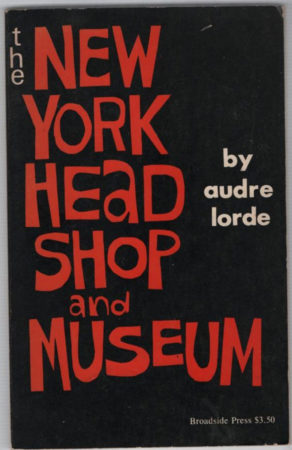 Sara Ahmed observes that Lorde’s writing is ‘personal testimony as well as political speech’ and that she ‘made life itself a political art, an art which you must craft from the resources that you have available’. One of her most crucial resources was New York, the place where she was born and where she lived for significant periods of time. Her 1975 collection New York Head Shop and Museum (now out of print but available as part of her Collected Poems), is both a portrait of the city as it slid into dereliction in the 1970s and a metaphorical act of taking to the streets in order to reclaim space and assert the existence of the marginalised. A glance at the contents list indicates the extent of New York’s critical role in the collection –titles include ‘New York City 1970’, ‘To Desi as Joe as Smoky the Lover of 115th Street’, ‘A Sewerplant Grows in Harlem’, ‘A Birthday Memorial to Seventh Street’, ‘A Year to Life on the Grand Central Shuttle’, ‘A Trip on the Staten Island Ferry’ and ‘Memorial III from a Phone Booth on Broadway’. The poems themselves are filled with references to a wide range of identifiable places all over New York, including the subway, the Staten Island Ferry, East Side Drive, Wall Street, Fourteenth Street, Riverside Drive, Brighton Beach Brooklyn and 125th Street and Lenox. The city that emerges from New York Head Shop is overwhelmingly deficient but richly lived, containing occurrences of horror, heartbreak and sometimes happiness.
Sara Ahmed observes that Lorde’s writing is ‘personal testimony as well as political speech’ and that she ‘made life itself a political art, an art which you must craft from the resources that you have available’. One of her most crucial resources was New York, the place where she was born and where she lived for significant periods of time. Her 1975 collection New York Head Shop and Museum (now out of print but available as part of her Collected Poems), is both a portrait of the city as it slid into dereliction in the 1970s and a metaphorical act of taking to the streets in order to reclaim space and assert the existence of the marginalised. A glance at the contents list indicates the extent of New York’s critical role in the collection –titles include ‘New York City 1970’, ‘To Desi as Joe as Smoky the Lover of 115th Street’, ‘A Sewerplant Grows in Harlem’, ‘A Birthday Memorial to Seventh Street’, ‘A Year to Life on the Grand Central Shuttle’, ‘A Trip on the Staten Island Ferry’ and ‘Memorial III from a Phone Booth on Broadway’. The poems themselves are filled with references to a wide range of identifiable places all over New York, including the subway, the Staten Island Ferry, East Side Drive, Wall Street, Fourteenth Street, Riverside Drive, Brighton Beach Brooklyn and 125th Street and Lenox. The city that emerges from New York Head Shop is overwhelmingly deficient but richly lived, containing occurrences of horror, heartbreak and sometimes happiness.
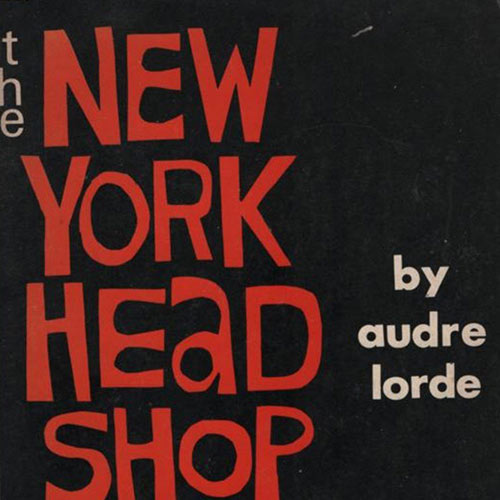
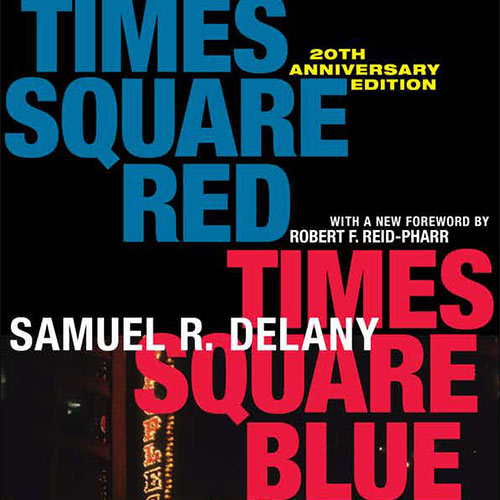
 Times Square Red, Times Square Blue provocatively explores the redevelopment of New York City’s 42nd Street, or the Deuce, since the start of the 1960s – ‘a violent reconfiguration’ of the landscape of the city. The book consists of two extended essays, each moving ‘along different trajectories and at different intensities … two attempts by a single navigator to describe what the temporal coastline and the lay of the land looked like and felt like and the thoughts he had while observing them’. Delany playfully but instructively tracks the shift of one of the world’s most famous urban places – Times Square – from a locale hinging on pornography and public sex to one structured around tourism, ‘family values and safety’. In evoking and mourning the disappearance of the old Times Square, Delany illuminates the complex social relationships that developed there and were subsequently lost, exploring the pleasure and importance of communication across classes and in public spaces, and the crucial differences between institutionally-engineered networking (which tends to take place indoors) and contact, which is associated with public space and is more broadly social and random.
Times Square Red, Times Square Blue provocatively explores the redevelopment of New York City’s 42nd Street, or the Deuce, since the start of the 1960s – ‘a violent reconfiguration’ of the landscape of the city. The book consists of two extended essays, each moving ‘along different trajectories and at different intensities … two attempts by a single navigator to describe what the temporal coastline and the lay of the land looked like and felt like and the thoughts he had while observing them’. Delany playfully but instructively tracks the shift of one of the world’s most famous urban places – Times Square – from a locale hinging on pornography and public sex to one structured around tourism, ‘family values and safety’. In evoking and mourning the disappearance of the old Times Square, Delany illuminates the complex social relationships that developed there and were subsequently lost, exploring the pleasure and importance of communication across classes and in public spaces, and the crucial differences between institutionally-engineered networking (which tends to take place indoors) and contact, which is associated with public space and is more broadly social and random.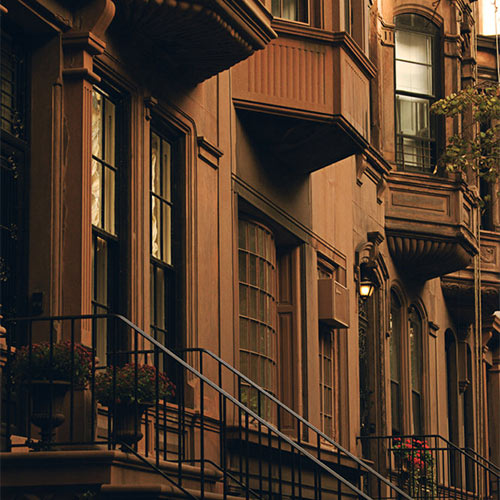
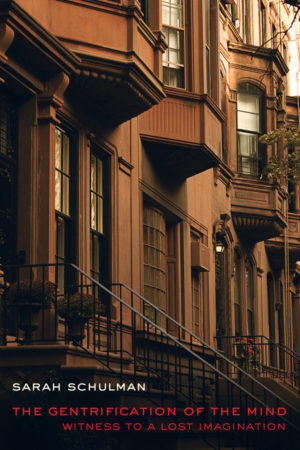 This is a queer book – one that refuses the well-worn and instantly recognizable structure of academic books, that doesn’t follow the storyline academic books are supposed to follow. As Schulman writes in her introduction, ‘some ideas have to be formally replicated, instead of being described. They have to be evoked.’ The Gentrification of the Mind is a memoir and analysis of the years during the AIDS crisis during which Schulman witnessed the disappearance of the New York she knew and loved, with the spectre of AIDS moving hand-in-hand with gentrification and mainstream consumerism. It laments lost places and lost people (‘destroyed neighborhoods remain destroyed’) but it is also a celebration of difference and futurity, of using activism and the arts to reclaim those lost places: ‘in order for radical queer culture to thrive, there must be diverse, dynamic cities in which we can hide/flaunt/learn/influence – in which there is room for variation and discovery’.
This is a queer book – one that refuses the well-worn and instantly recognizable structure of academic books, that doesn’t follow the storyline academic books are supposed to follow. As Schulman writes in her introduction, ‘some ideas have to be formally replicated, instead of being described. They have to be evoked.’ The Gentrification of the Mind is a memoir and analysis of the years during the AIDS crisis during which Schulman witnessed the disappearance of the New York she knew and loved, with the spectre of AIDS moving hand-in-hand with gentrification and mainstream consumerism. It laments lost places and lost people (‘destroyed neighborhoods remain destroyed’) but it is also a celebration of difference and futurity, of using activism and the arts to reclaim those lost places: ‘in order for radical queer culture to thrive, there must be diverse, dynamic cities in which we can hide/flaunt/learn/influence – in which there is room for variation and discovery’.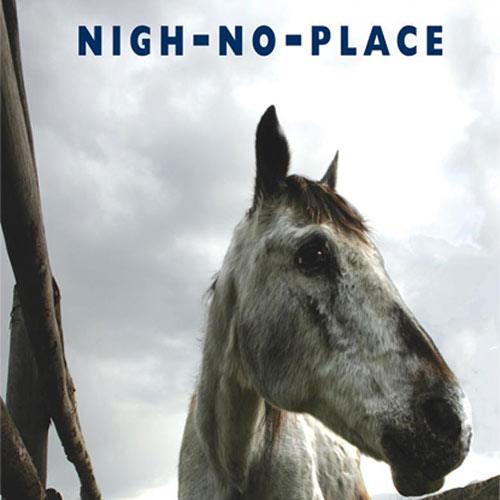
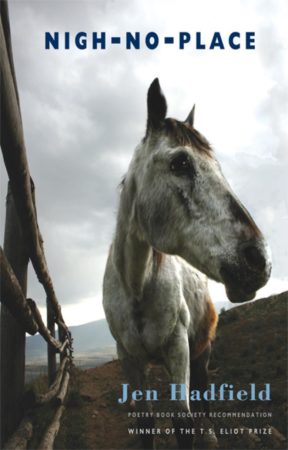 As in all of Jen Hadfield’s poetry collections, Nigh-No-Place explores the Shetland landscape in an intimate and yet estranging manner. Her eye for detail and ear for sound brings us the more curious and overlooked parts of the landscape. Inventive and often curious images lead the writing, as well as her sensitive use of the Shetland dialect. My favourite poem is ‘Daed-traa’ (a Shetland word used for ‘the slack of the tide’) that is an extraordinary feat of mixed metaphor in which a manifesto for poetry is entangled within the landscape itself and its inhabiting creatures: ‘I go to the rockpool at the slack of the tide / to mind me what my poetry’s for… It has its Little Shop of Horrors. / It has its crossed and dotted monsters’.
As in all of Jen Hadfield’s poetry collections, Nigh-No-Place explores the Shetland landscape in an intimate and yet estranging manner. Her eye for detail and ear for sound brings us the more curious and overlooked parts of the landscape. Inventive and often curious images lead the writing, as well as her sensitive use of the Shetland dialect. My favourite poem is ‘Daed-traa’ (a Shetland word used for ‘the slack of the tide’) that is an extraordinary feat of mixed metaphor in which a manifesto for poetry is entangled within the landscape itself and its inhabiting creatures: ‘I go to the rockpool at the slack of the tide / to mind me what my poetry’s for… It has its Little Shop of Horrors. / It has its crossed and dotted monsters’.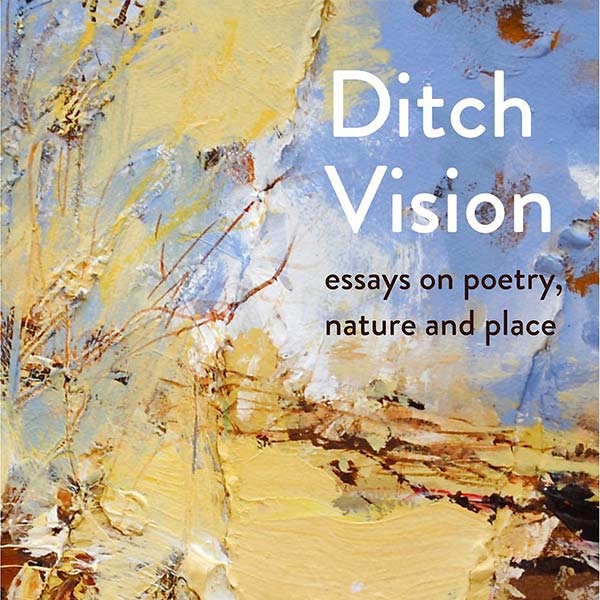
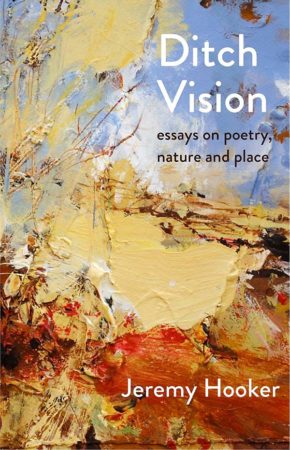 This book provides a useful way to conceptualise the differing scales of British and American landscapes in the context of nature writing from the nineteenth century to the twentieth century. Hooker suggests that many British writers demonstrate ‘ditch vision’ in their portrayals of environments. Rather than grand expanses, this approach studies microcosms of the wild in landscapes otherwise deemed increasingly urban. Hooker takes his lead from Richard Jefferies who in ‘The Pageant of Summer’ finds a ditch overflowing with ‘Green rushes, long and thick … the white pollen of early grasses … hawthorn boughs … briars … buds’ ([1884] 2011: 41–2). The observation leads him to remark, ‘So much greater is this green and common rush than all the Alps’ (ibid.: 43). Hooker applies his concept of ‘ditch vision’ to writers including Edward Thomas, John Cowper Powys and Frances Bellerby.
This book provides a useful way to conceptualise the differing scales of British and American landscapes in the context of nature writing from the nineteenth century to the twentieth century. Hooker suggests that many British writers demonstrate ‘ditch vision’ in their portrayals of environments. Rather than grand expanses, this approach studies microcosms of the wild in landscapes otherwise deemed increasingly urban. Hooker takes his lead from Richard Jefferies who in ‘The Pageant of Summer’ finds a ditch overflowing with ‘Green rushes, long and thick … the white pollen of early grasses … hawthorn boughs … briars … buds’ ([1884] 2011: 41–2). The observation leads him to remark, ‘So much greater is this green and common rush than all the Alps’ (ibid.: 43). Hooker applies his concept of ‘ditch vision’ to writers including Edward Thomas, John Cowper Powys and Frances Bellerby.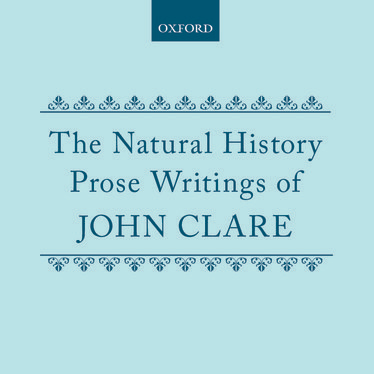
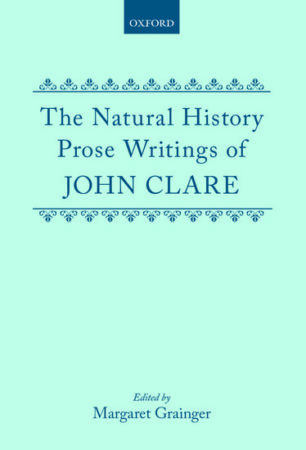 With a couple of exceptions, Clare spent the first thirty-nine years of his life in one place: Helpston, ‘a gloomy village in Northamptonshire, on the brink of the Lincolnshire fens’, as he writes in his ‘Sketches of the Life of John Clare’ (John Clare by Himself), a ‘slip between two shores’, a place ‘not poetical enough’ for turtle doves as he describes it elsewhere (Natural History Prose). Sometimes, I’m not entirely convinced that Clare loved his native place for its own placeness. What the prose brings home to me is the particularity of Clare’s places: he’s a lover of ‘spots’ and ‘nooks’, this particular tree, these birds of this wood. The place names and place-specific natural history details of his prose are familiar from his poems – Swordy Well, Royce Wood, Langley Bush, nightingales, ferns, shells and orchids – and moments in the prose often recall those of his poems. As well as revealing further his skill as a fieldwork naturalist (his incomplete ‘Natural History of Helpstone’ written on the model of Gilbert White), the prose extends our insight into Clare’s poetic life: how he came to poetry and what poems he read, how and where he came to write his own, and what he also refers to as his ‘poetical’ feeling (the autobiographical fragment ‘Leisure’ is a particular treat in this regard), embedded in place and bound up with what Clare invariably describes as ‘love’.
With a couple of exceptions, Clare spent the first thirty-nine years of his life in one place: Helpston, ‘a gloomy village in Northamptonshire, on the brink of the Lincolnshire fens’, as he writes in his ‘Sketches of the Life of John Clare’ (John Clare by Himself), a ‘slip between two shores’, a place ‘not poetical enough’ for turtle doves as he describes it elsewhere (Natural History Prose). Sometimes, I’m not entirely convinced that Clare loved his native place for its own placeness. What the prose brings home to me is the particularity of Clare’s places: he’s a lover of ‘spots’ and ‘nooks’, this particular tree, these birds of this wood. The place names and place-specific natural history details of his prose are familiar from his poems – Swordy Well, Royce Wood, Langley Bush, nightingales, ferns, shells and orchids – and moments in the prose often recall those of his poems. As well as revealing further his skill as a fieldwork naturalist (his incomplete ‘Natural History of Helpstone’ written on the model of Gilbert White), the prose extends our insight into Clare’s poetic life: how he came to poetry and what poems he read, how and where he came to write his own, and what he also refers to as his ‘poetical’ feeling (the autobiographical fragment ‘Leisure’ is a particular treat in this regard), embedded in place and bound up with what Clare invariably describes as ‘love’.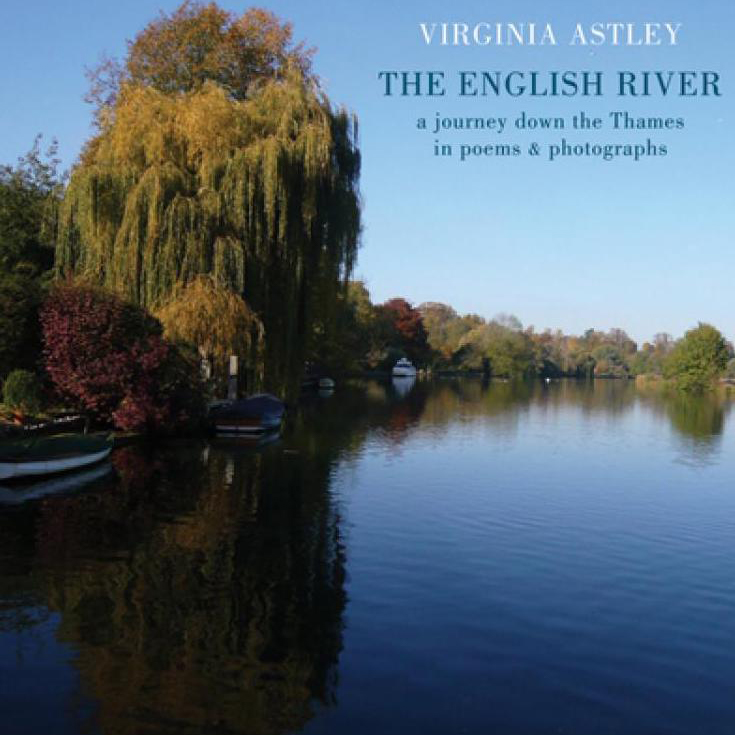
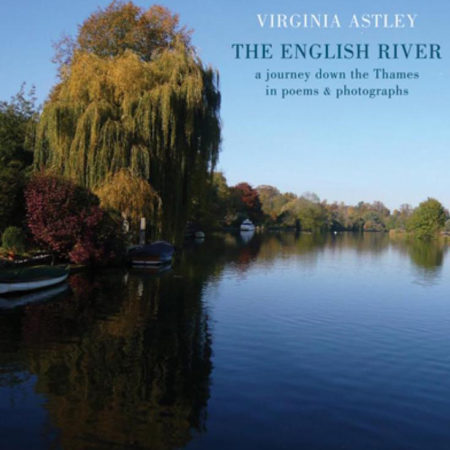 I came to Astley, as most do, through her music. Her album Gardens Where We Feel Secure (1983) is a beautiful art of place in its own right, capturing an English summer day from dawn to dusk. Instrumentals interweave with field recordings of birds, sheep, churchbells, gardening, and rowing on the Thames, in and around Astley’s native Moulsford in Oxfordshire. Like Gardens, Astley’s The English River (her first full-length poetry collection) takes a soft and gentle approach. The book has the feel of a private notebook: the poems are tentative and sketch-like, offering glimpses of places which become increasingly bound up with the writer’s own memory (river poems seem to have the peculiar ability to facilitate this sort of reaching back and unlocking). In some ways the collection is the counterpart to the dazzling sinewy force and intellect of Alice Oswald’s Dart. The collection begins at the river’s source in Gloucestershire and in an elliptical meandering ends up downstream in the capital, with photographs and verse taking in flowers, birds, houses, weirs, locks and houses at various locations – including Moulsford – on its way. There are many arts of rivers, but what I like about this one is how personal and sort of artless it is: The English River evokes how a river flows through a person’s life and mind and what comes out the other side.
I came to Astley, as most do, through her music. Her album Gardens Where We Feel Secure (1983) is a beautiful art of place in its own right, capturing an English summer day from dawn to dusk. Instrumentals interweave with field recordings of birds, sheep, churchbells, gardening, and rowing on the Thames, in and around Astley’s native Moulsford in Oxfordshire. Like Gardens, Astley’s The English River (her first full-length poetry collection) takes a soft and gentle approach. The book has the feel of a private notebook: the poems are tentative and sketch-like, offering glimpses of places which become increasingly bound up with the writer’s own memory (river poems seem to have the peculiar ability to facilitate this sort of reaching back and unlocking). In some ways the collection is the counterpart to the dazzling sinewy force and intellect of Alice Oswald’s Dart. The collection begins at the river’s source in Gloucestershire and in an elliptical meandering ends up downstream in the capital, with photographs and verse taking in flowers, birds, houses, weirs, locks and houses at various locations – including Moulsford – on its way. There are many arts of rivers, but what I like about this one is how personal and sort of artless it is: The English River evokes how a river flows through a person’s life and mind and what comes out the other side.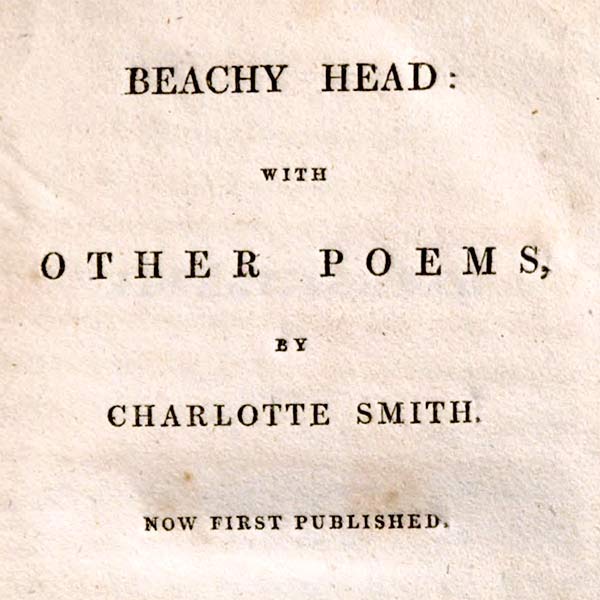
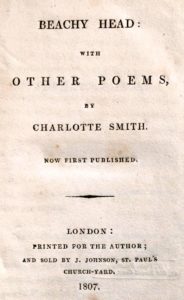 Recommended by
Recommended by 
 Recommended by
Recommended by 
 This is an edited collection, but nonetheless, the introduction sets out an extremely useful framework for thinking about books as ‘placed’ objects, and what happens to them when they begin to move and circulate. As Withers and Ogborn explain, while the history of the book is a discipline that has been long studied, far less attention has been paid to the geography of the book, a topic which is intimately connected to the cartographies of print production and distribution. The introduction is a great read if you are interested in gaining a critical vocabulary for talking about books as moving objects!
This is an edited collection, but nonetheless, the introduction sets out an extremely useful framework for thinking about books as ‘placed’ objects, and what happens to them when they begin to move and circulate. As Withers and Ogborn explain, while the history of the book is a discipline that has been long studied, far less attention has been paid to the geography of the book, a topic which is intimately connected to the cartographies of print production and distribution. The introduction is a great read if you are interested in gaining a critical vocabulary for talking about books as moving objects!